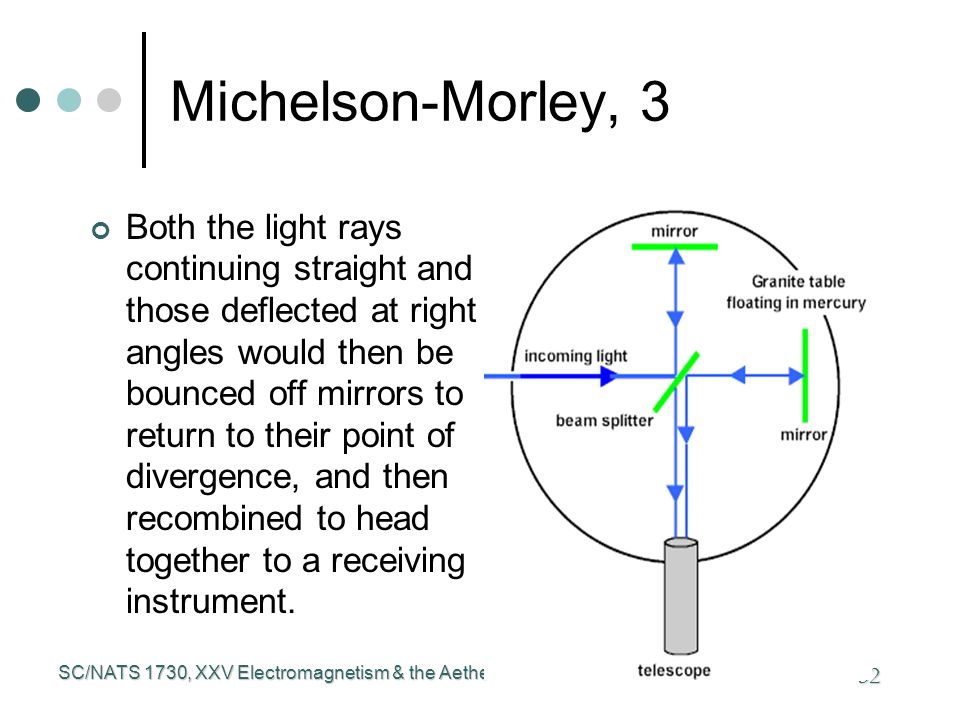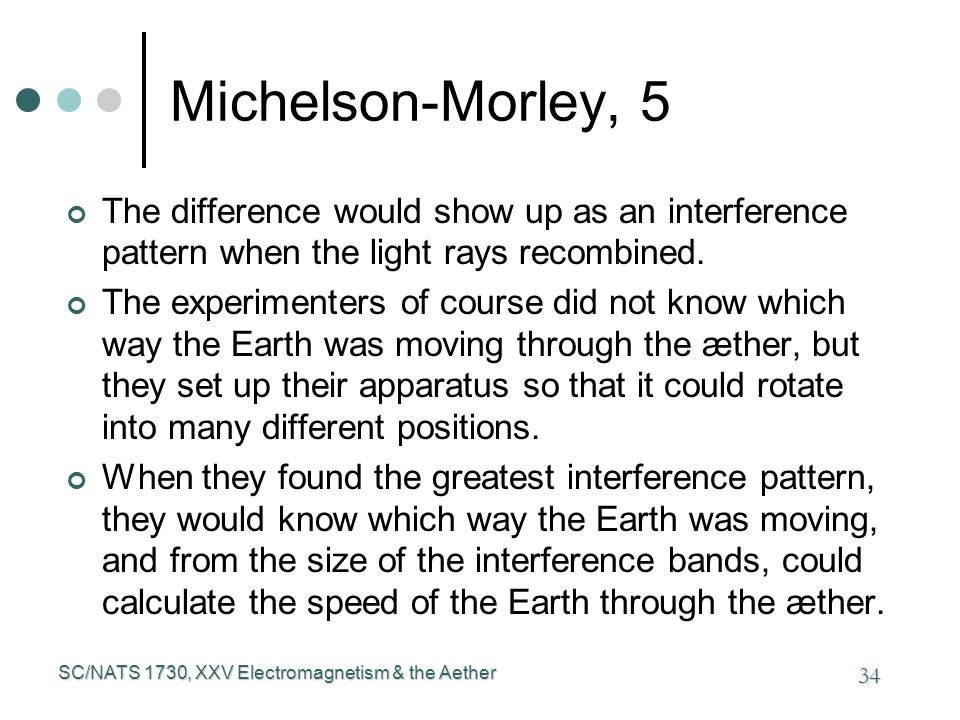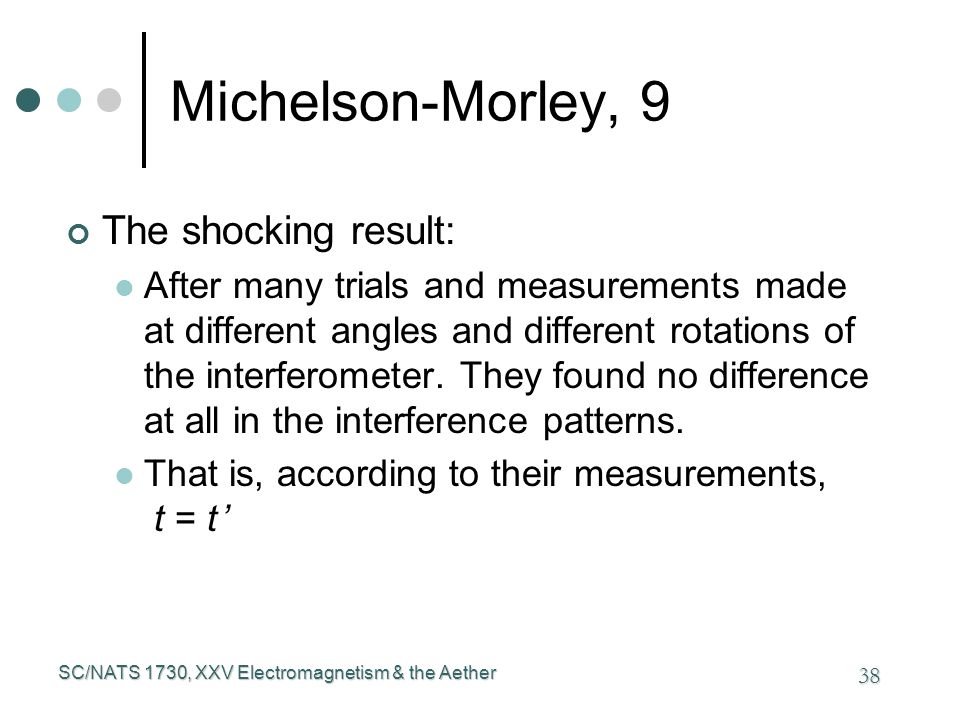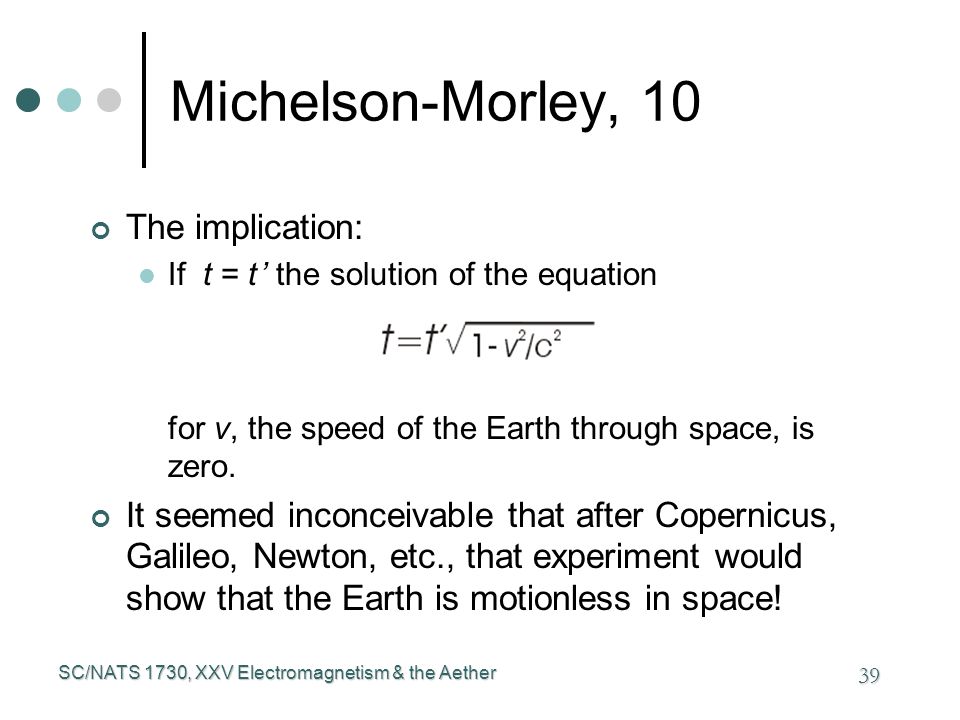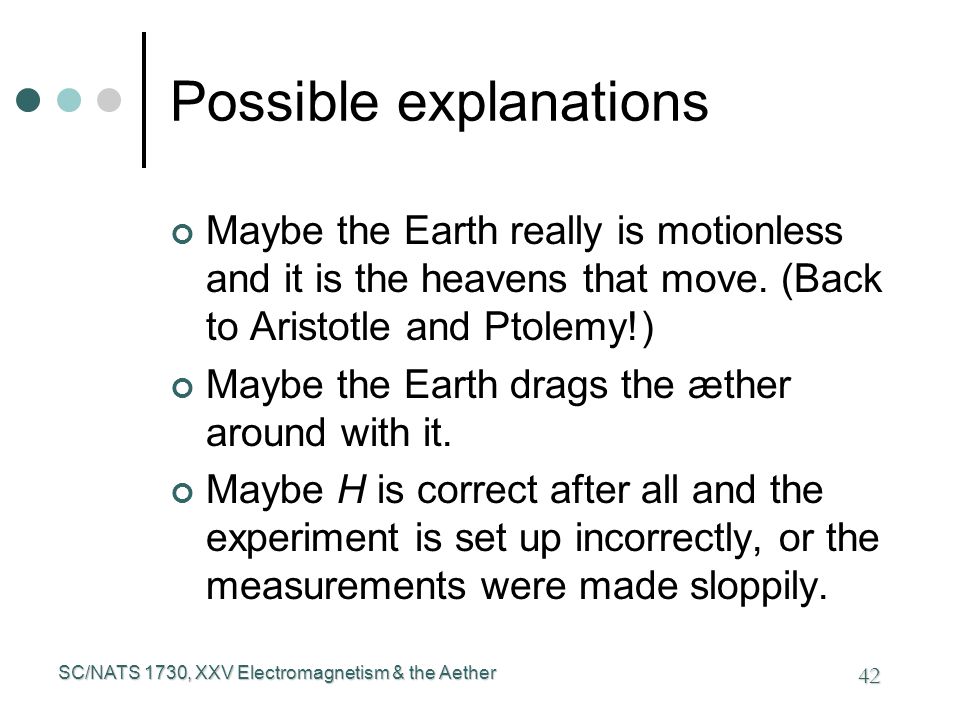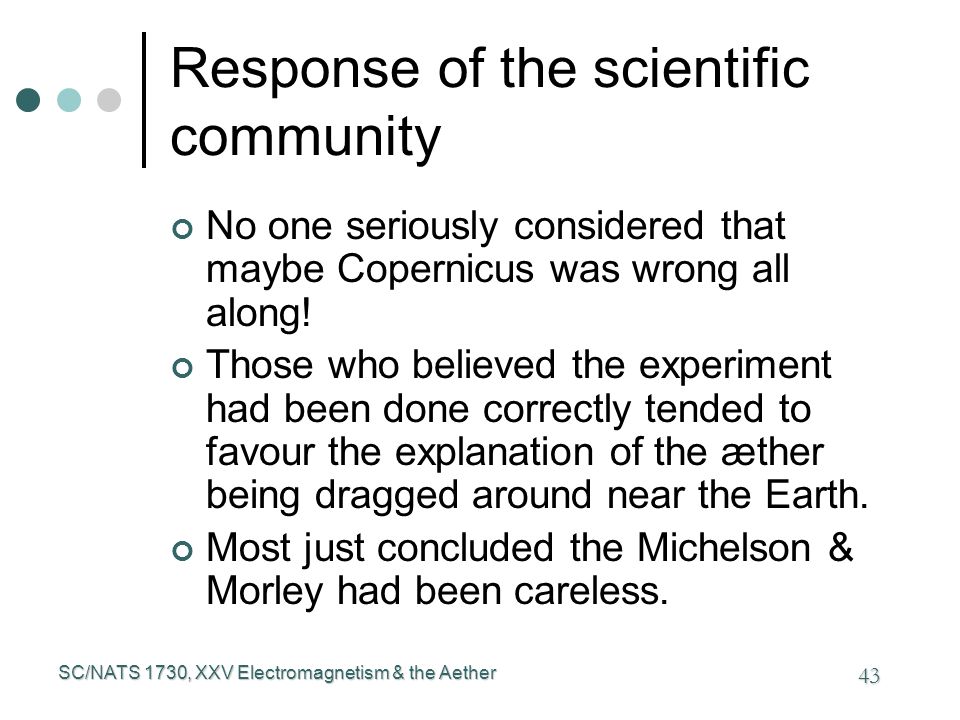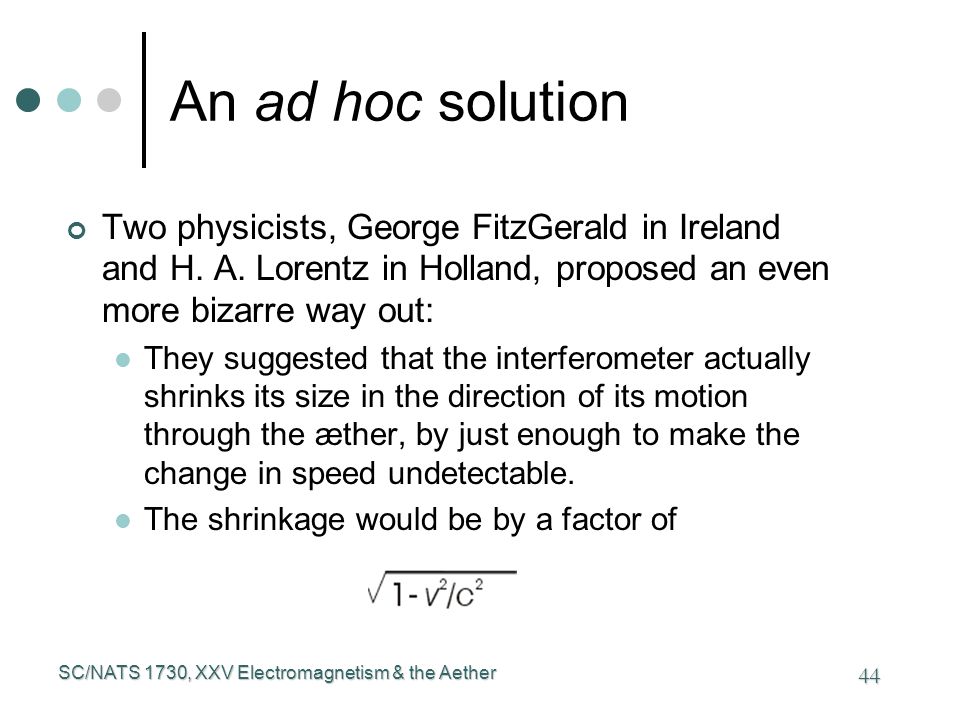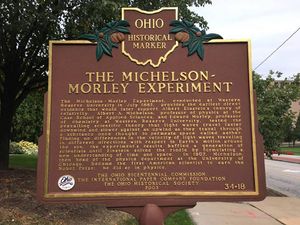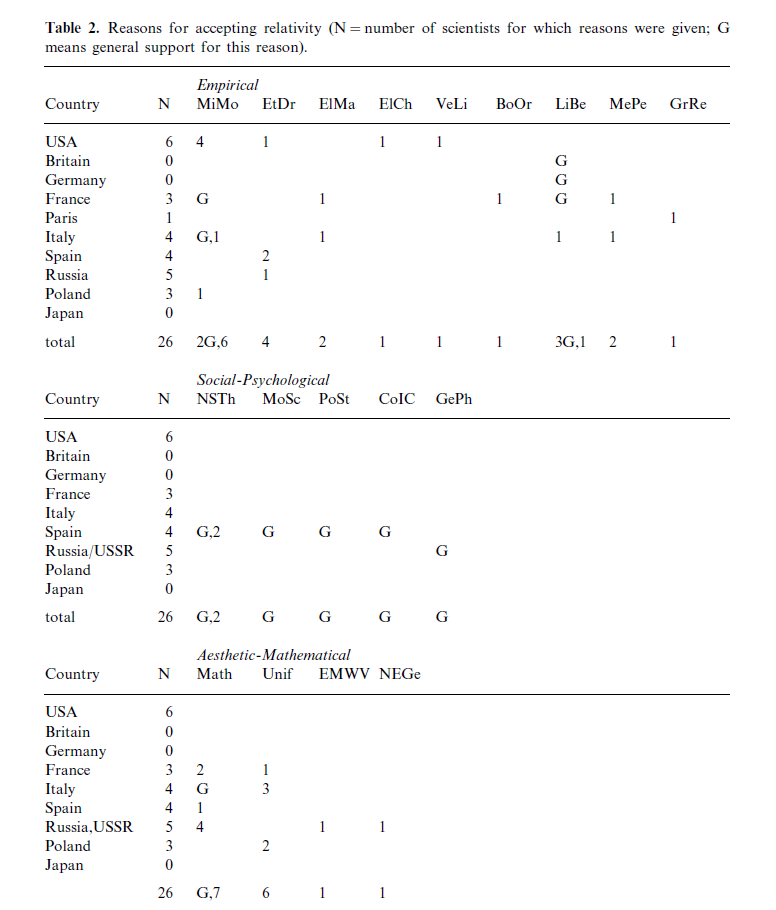Difference between revisions of "Michelson-Morley Experiment"
Tom Bishop (talk | contribs) |
Tom Bishop (talk | contribs) |
||
| Line 41: | Line 41: | ||
[[File:MM-Historical-Marker.jpg|thumb|Michelson-Morley Historical Marker]] | [[File:MM-Historical-Marker.jpg|thumb|Michelson-Morley Historical Marker]] | ||
| − | In Cleveland there is a Michelson-Morley Historical Marker located just outside the science building on the Case Western Reserve University campus which provides the following: | + | In Cleveland, Ohio, there is a Michelson-Morley Historical Marker located just outside the science building on the Case Western Reserve University campus which provides the following: |
"The Michelson-Morley Experiment, conducted at the Western Reserver University in July 1887, provides the earliest direct evidence that would later support Albert Einstein's theory of relativity. Albert A. Michelson, professor of physics at the Case School of Applied Sciences, and Edward Morley, professor of chemistry at Western Reserve University, tested the prevailing scientific theory that light waves travel faster downwind and slower against an upwind as they travel faster through a substance once thought to permeate space called aether. Finding no differences in the velocity of light waves traveling in different directions with respect to Earth's motion around the sun, the experiment's results baffled a generation of scientists until Einstein solved the riddle by formulating a new understanding of time and space. In 1907, Michelson, then head of the physics department at the University of Chicago, became the first American scientist to earn the Nobel Prize: he did so in physics." | "The Michelson-Morley Experiment, conducted at the Western Reserver University in July 1887, provides the earliest direct evidence that would later support Albert Einstein's theory of relativity. Albert A. Michelson, professor of physics at the Case School of Applied Sciences, and Edward Morley, professor of chemistry at Western Reserve University, tested the prevailing scientific theory that light waves travel faster downwind and slower against an upwind as they travel faster through a substance once thought to permeate space called aether. Finding no differences in the velocity of light waves traveling in different directions with respect to Earth's motion around the sun, the experiment's results baffled a generation of scientists until Einstein solved the riddle by formulating a new understanding of time and space. In 1907, Michelson, then head of the physics department at the University of Chicago, became the first American scientist to earn the Nobel Prize: he did so in physics." | ||
Revision as of 09:26, 8 September 2018
The Michelson–Morley experiment was first performed in 1887 by Albert A. Michelson and Edward W. Morley. Its purpose was to compare the speed of light in perpendicular directions, in an attempt to detect the relative motion of matter through the stationary luminiferous aether by using the rotation of the earth to create interference bands of light for the study.
The surprising and shocking result of this experiment is that the earth did not measurably rotate at all, in contradiction to all expectations and the accepted astronomical model. Michelson and Morley repeated the experiment many times, and in many different horizontal axial positions and configurations, all with a null result. The earth was seen to be motionless. The experiment has been referred to as "the moving-off point for the theoretical aspects of the Second Scientific Revolution" and directly influenced the creation of Albert Einstein's Theory of General Relativity.
The Theory of General Relativity subsequently found favor among scientific circles because its model was designed to seemingly explain the motionless earth result of the Michelson-Morley experiment. This allowed the theory of the earth's rotation to survive direct contradicting experimental evidence and encouraged, perhaps forced, the adoption of GR as the accepted model of space for Heliocentricism.
http://hyperphysics.phy-astr.gsu.edu/hbase/Relativ/mmhist.html
"Although repeated over the next 40 years with ever greater precision and the same negative result, this 1887 experiment is pointed to as one of the experimental foundations of relativity, and earned Michelson the Nobel Prize in 1907."
Description and Result
Material from a York University course provides a good summary of the Michelson-Morley experiment and its result. Below are selected slides that tell the story. Interested readers should feel free to go through the entire slide deck.
Class Description
Full Slideshow
Peer Reviews and Repetitions
Since 1887 the Michelson-Morley experiment has been repeated and verified on a number of occasions.
2009 Repetition in Germany
https://physicsworld.com/a/michelson-morley-experiment-is-best-yet/
Michelson–Morley experiment is best yet
"Physicists in Germany have performed the most precise Michelson-Morley experiment to date, confirming that the speed of light is the same in all directions. The experiment, which involves rotating two optical cavities, is about 10 times more precise than previous experiments – and a hundred million times more precise than Michelson and Morley’s 1887 measurement."
Influence of the M-M Experiment on General Relativity
Historical Marker
In Cleveland, Ohio, there is a Michelson-Morley Historical Marker located just outside the science building on the Case Western Reserve University campus which provides the following:
"The Michelson-Morley Experiment, conducted at the Western Reserver University in July 1887, provides the earliest direct evidence that would later support Albert Einstein's theory of relativity. Albert A. Michelson, professor of physics at the Case School of Applied Sciences, and Edward Morley, professor of chemistry at Western Reserve University, tested the prevailing scientific theory that light waves travel faster downwind and slower against an upwind as they travel faster through a substance once thought to permeate space called aether. Finding no differences in the velocity of light waves traveling in different directions with respect to Earth's motion around the sun, the experiment's results baffled a generation of scientists until Einstein solved the riddle by formulating a new understanding of time and space. In 1907, Michelson, then head of the physics department at the University of Chicago, became the first American scientist to earn the Nobel Prize: he did so in physics."
Why General Relativity was Accepted
Why Was Relativity Accepted?
By Stephen G. Brush
Full Text: http://citeseerx.ist.psu.edu/viewdoc/download?doi=10.1.1.535.1670&rep=rep1&type=pdf
An interesting analysis on why Relativity was accepted in science. The author concludes that much of why it was accepted is because it was a world-model which purported to explain the Michelson-Morley experimental result of a motionless non-rotating earth. Another top reason was because of an underlying desire for a unified, elegant physical theory
The author provides quotes by the scientists of the day, identifying the Michelson-Morely null result as a primary factor.
Remarks by Prominent Physicists
"José Sánchez-Ron [a prominent Spanish physicist] suggests that G.A. Schott and other British physicists were interested in relativity because it offered a way to deal with problems arising from the new atomic physics, in which the magnetic interactions of electrons and their behavior at very high speeds needed to be better understood.
Sánchez-Ron also points to the interest of these physicists in symmetry considerations. But the most explicit statement he quotes about the reason for accepting relativity is that of an anonymous reviewer of Ludwik Silberstein’s 1914 book: ‘without the result of Michelson and Morley’s experiment there would be no justification for the theory at all... [It] will only be when further experimental data of a crucial kind are obtained that the theory will run much chance of becoming definitely accepted as scientific knowledge.’"
"In 1907, K.K. Baumgart supported the‘‘Lorentz-Einstein theory’’ because it was compatible with the negative result of the Michelson-Morley experiment"
"Dirac [a famous English theoretical physicist] stated that he first learned about relativity theory when it was widely publicized in England after World War I by Eddington. His initial interest in the theory was captured by the experimental evidence – Michelson-Morley experiment, Mercury’s orbit, and light bending."
"Langevin [a famous French physicist] tried to persuade the Collège de France to invite Einstein to lecture in Paris, and finally succeeded in 1922; the result was a flurry of popular interest in relativity. After Einstein’s visit Langevin decided that relativity is supported by experiments such as that of Michelson and Morley."
Statistical Tables
The author provides three statistical analysis tables for why Relativity was accepted, focusing on Empirical reasons, Social-Psychological reasons, and Aesthetic-Mathematical reasons.
Abbreviation Reference
Empirical
MiMo — negative result of Michelson-Morley experiment
EtDr — failure of ether drift experiments
ElMa — variation of electron mass with velocity
ElCh — variation of electron charge with velocity
VeLi — velocity of light from terrestrial and celestial sources is the same
BoOr — correction of orbits and energy levels in Bohr model of atom
LiBe — light-bending observations
MePe — Advance of Mercury Perihelion
GrRe — Gravitational redshift of spectral lines
Social-Psychological
NSTh — rejection of absolute space and time is consistent with neoscholastic theology
MoSc — association with ‘‘modern’’ science
PoSt — relativism of political structures, attractive to anit-democratic ideologues
CoIC — acquire prestige for comprehending the incomprehensible
GePh — respect for authority of German physics
Aesthetic-Mathematical
Math — mathematical aspects of the theory
Unif — desire for a unified, elegant physical theory
EMWV — connection with electromagnetic worldview
NEGe — connection with Lobachevskii’s non-Euclidean geometry

